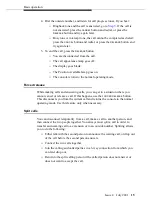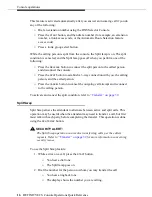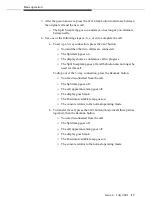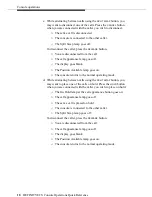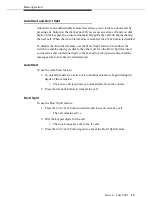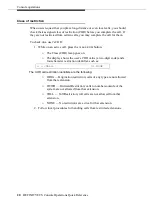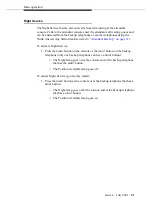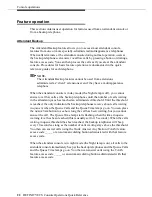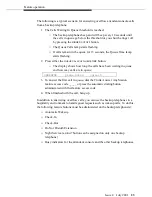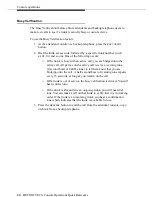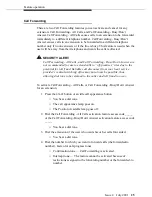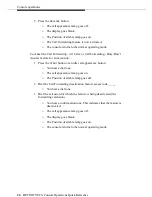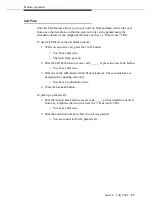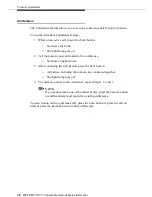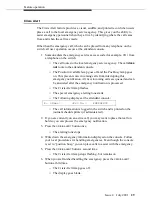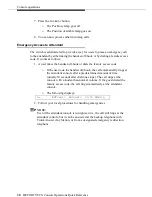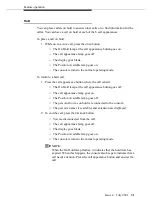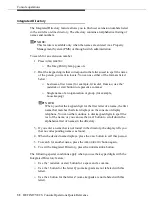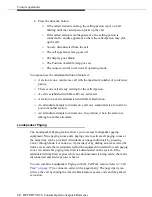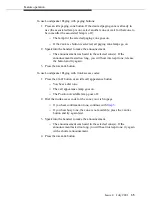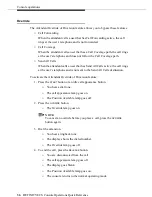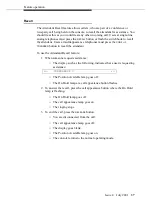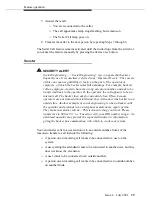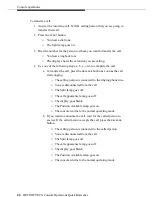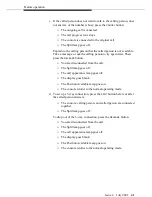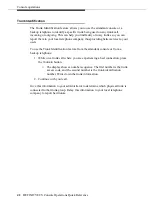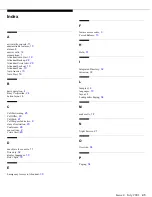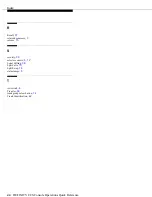
Feature operation
Issue 4 July 2001
29
Crisis Alert
The Crisis Alert feature provides a visual, audible, and printed record when users
place a call to the local emergency service agency. This gives you the ability to
assist emergency personnel when they arrive by identifying where the call came
from and when the call was made.
Other than the emergency call, which can be placed from any telephone on the
switch, all user operation occurs at the attendant console.
1. Someone dials the emergency services access code (for example, 911) from
a telephone on the switch.
■
The call routes to the local emergency service agency. The call
does
not
route to the attendant console.
■
The Position Available lamp goes off and the Pos Busy lamp goes
on. This prevents new incoming calls from interrupting this
emergency notification. All new incoming calls are queued and can
be answered after the emergency notification is processed.
■
The Crisis Alert lamp flashes.
■
The special emergency alerting tone starts.
■
The following displays at the attendant console:
■
The call information is logged in the switch and is printed on the
journal/schedule printer (if administered).
2. If you are currently on an active call, you may want to place that call on
hold so you can process the emergency notification.
3. Press the
CRISIS ALERT
button once.
■
The alerting tone stops.
4. Write down the emergency information displayed on the console. Follow
your local procedures for handling emergencies. Even though the console
is set to “position busy,” you can place calls to assist with the emergency.
5. Press the
CRISIS ALERT
button a second time.
■
The Crisis Alert lamp stops flashing, but remains on.
6. When you are finished handling the emergency, press the
CRISIS ALERT
button a third time.
■
The Crisis Alert lamp goes off.
■
The display goes blank.
E=
<Name>
<Ext No.>
EMERGENCY
Summary of Contents for Definity Enterprise Communications Server
Page 50: ......

